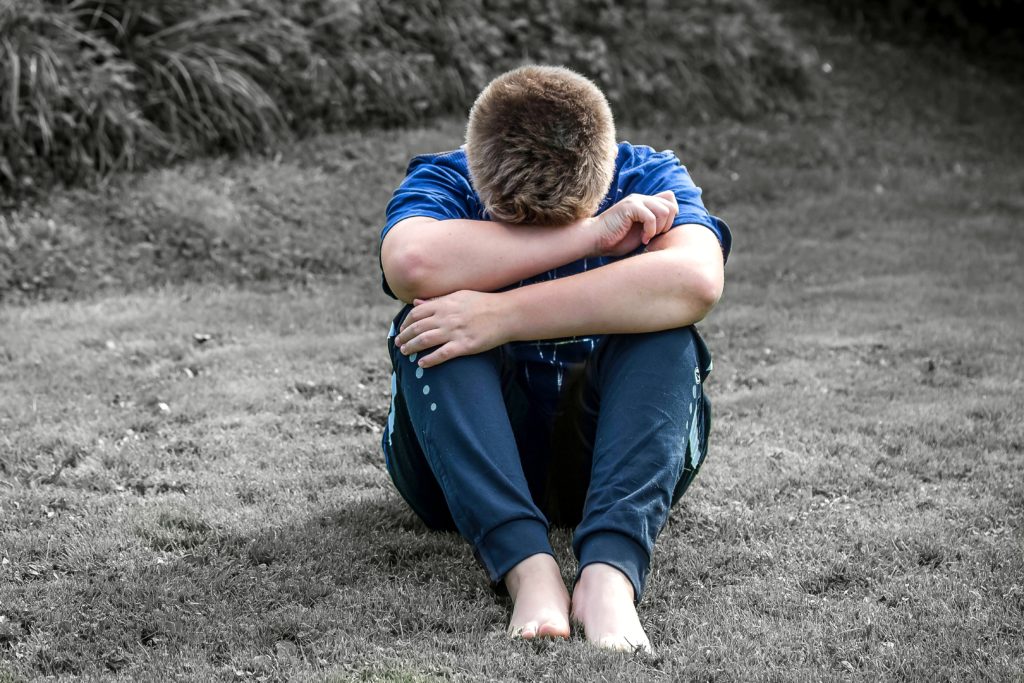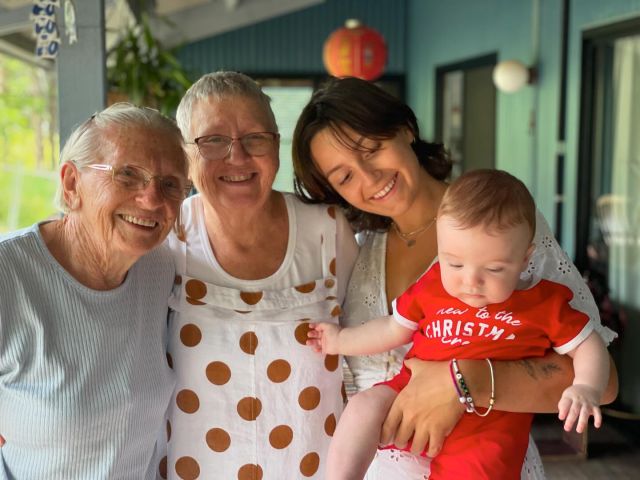The Modern Parent’s Guide to Discipline is about a subject very close to my heart. Like some of my generation and many of the baby boomer’s generation, the belt was used with gusto by parents, as was the wooden spoon, smacking (spanking) and children who swore or told lies had their mouths washed out with soap, literally. I remember that taste, but have no recollection of my crime. I said anything that would get me out of trouble, so it didn’t actually teach me not to lie.
My definition of corporal /physical punishment for this article
I am making this my list of actions by a parent or other legal guardian causing deliberate physical pain or discomfort to a minor child in response to some undesired behavior by the child. I base this on research and personal experience from teachers, child care given and some parents I have known. This includes:
- spanking or slapping the child with an open hand
- striking with an implement such as a belt, slipper, cane, hairbrush, wooden spoon or paddle
- shaking
- pinching
- forced ingestion of substances (e.g. soap in mouth for lying or swearing)
- forcing children to stay in uncomfortable positions
- throwing objects at child
- pulling hair
- banging head child’s against an object
- throwing child into the deep end of a pool being unable to swim
- kicking
We have evolved as parents (I hope)
These cruel, outdated and counter productive methods are now largely regarded as abusive and importantly, ineffective, and have been left behind in favour of more intelligent, self esteem building strategies.
There are still some parents however, who didn’t get the memo that you cannot teach children to be compassionate, empathetic and emotionally secure people, if your disciplinary methods don’t reflect this. It is never too late to ditch the physical punishments and take on a role as a nurturing, supportive parent, who uses positive reinforcement to focus on the good, rather than repeatedly telling the child they are wrong or bad.
Unfortunately there are still parents with anger management issues who do hit and hurt children (and feel justified to do so as Australian laws let them) but it is important that if you are such a parent that you understand the harm you are causing your child and that you get proper help and support, so you can be a for loving and effective parent.
The Long Term Effects of Physical Punishment of Children as a form of Discipline
It’s not just me that cannot accept children being punished physically. A recent Canadian study shows that smacking a child “erodes developmental growth in children and decreases a child’s IQ”. The study synthesized 20 years of published research on the topic and the aim was to “shift the ethical debate over corporal punishment into the medical sphere,” says Joan Durant, a professor at University of Manitoba and one of the authors of the study.

A reduction in the brain’s grey matter, which is the connective tissue between brain cells. This part of the brain is an essential factor influencing/increasing the chances of:
- lower intelligence and learning abilities
- sensory perception
- speech issues
- lack of muscular control
- disordered emotions and impaired memory
- vulnerability to depression, typically in girls
- antisocial tendencies usually manifest in boys (such as violent behaviour)
- lasting emotional damage that inhibits the learning process
- undermining the trust between parent and child
- hostility toward authority figures
- being more likely to be victims of violence outside the home
- mood disorders, anxiety disorders (such as bipolar disorder, depression)
- alcohol and drug abuse/dependence
- personality disorders (such as borderline personality disorder).

The fact is, physical punishment doesn’t work. It might appear to but study upon study show that all it does is foster fear at the time. Because it doesn’t work long term the type of corporal punishment escalates. Long term, physical punishment will only make a child’s behaviour worse.
“the AAP [in the USA] recommends time-outs, which typically involve denying the child any interaction, positive or negative, for a specified period of time. These quiet moments force children to calm down and think about their emotions rather than acting on them reflexively. After all, the goal of punishment is to get children to understand not just that they did something wrong but also what motivated them to do it.” Time Magazine
I personally believe, as a child who was belted, that this form of physical discipline is more about an adult expressing anger, that about teaching the child. I can anecdotally attest to the fact that it caused me, as an adult, PSTD, mood disorders, issues with authority figures (earlier in my career), generalised anxiety in some situations, depression and other far reaching effects I’d rathern not put down publicly. The fact is, from my experience, that hitting a child instills fear rather than creating understanding and modifying negative behaviour. If I was belted for lying, it didn’t teach me not to lie. It taught me to say whatever I needed to to avoid the belt. As it did not work, and I am a terrible liar, the beltings increased to the point of breaking skin and welts.
Physical punishment became illegal in Sweden in 1979 and today it is banned in 45 countries worldwide, including New Zealand. Australia still sanctions the physical punishment of a child, going against the UN Convention on the Rights of the Child – which states that signatories must take “all appropriate legislative, administrative, social and educational measures to protect the child from all forms of physical and mental violence” of which Australia is a signatory.
Below I have enlisted the help of child and family behavioural experts to help parents with strategies that don’t involve the physical punishment of children.

What the Experts Say:
Deb Hopper
Occupational Therapist/ Author/ Trainer

Deb is the author of ‘Reducing Meltdowns and Improving Concentration: The Just Right Kids Technique’ – Amazon No. 1 Bestselling Book.
Before discipline, ask WHY!
Dealing with children with difficult behaviours is one of the hardest tasks, whether we help kids as parents, teachers or other professionals. For parents, the intensity of managing behaviour, trying to be consistent, coping with the constant demands and juggles of life. So often our balls we juggle fall in a heap, as does our child’s behaviour.
As an Occupational Therapist in my private practice, I see children daily to have “behaviour issues”. Does this behaviour need discipline? Often yes, and behaviour nearly always improves with setting good boundaries and making sure the child understands expectations.
However, there are many reason why children struggle to cope, which may be mis-labelled as “mis-behaviour”. These include:
- Anxiety: Children who are anxious or worried about something may whine, may try and control the situation and may appear oppositional.
- Sensory overwhelm: If a child’s sensory system is in overwhelm, they are literally in a stress response – fight, flight or fright. This may be caused by too much noise, too much brightness, needing to touch or play with textures their nervous system can’t tolerate.
- Tiredness: out of routine or other family disruptions. There are many reasons why a child may show ‘behavioural’ responses. Is dad away on a trip for a few days, is it school holidays and they don’t know what is planned, have friends been staying for the weekend?
Self regulation, self control and emotional control are skills that need to be taught to children. Often using a visual such as the Just Right Kids Model can be helpful. Teaching children the skill of being able to label or point to an emotions chart just as the Just Right Kids Model is extremely effective. Some children are very self aware and can learn this skill fast, whereas many children that I work with, for many reasons struggle to be able to say, I feel tired, or I feel frustrated. Once children can identify how they are feeling, then we can teach them, “when you feel frustrated, your shoulders might feel tight or your heart might be racing. When you feel like this, you could try to do _____ to make your body feel better”.
Teaching self regulation, being aware of anxiety symptoms and sensory overwhelm in combination with setting clear boundaries and being consistent in follow up can make the biggest changes for children.
Understand and support your child – and use discipline as a back up, not the only solution.
[maxbutton id=”2″ url=”http://www.lifeskills4kids.com.au” text=”Visit Deb Hopper’s site for more info” ]
Caroline Radford RN RM CHN BNsg
Does a child need rules? Oh Yes…
I am sure we all agree that our children need simple rules and guidelines. Most of us all understand that our children don’t actually come with a rulebook and that sometimes their behaviours can be random and really stretch our limits.
What many of us sometimes forget in our busy parenting world is how much our children can grow and develop with our nurturing, positive role modelling, love and respect.
We believe children want and need to be introduced to simple, basic, clear rules by their parents. Young children are beginning to understand themselves as their own separate person with their own thoughts and feelings. During this stage, it is vital a child has a clear set of rules, or operating procedures to help them feel safe and to help keep them safe.
As a parent you have the power to guide and nurture your child’s behaviour and help to set the scene for them to begin to know what is expected of them both within the home and outside within society. You can make a fabulous start by provide a building block that your child can launch new skills from. We all agree that without the basics of healthy, appropriate foods, sufficient sleep, warmth and loving family we cannot go on to develop relationships, learn new skills and be who we eventually want to be!
So, easy step! Think about what your child eats each day and record their dietary intake (including snacks) for up to a week to gain a good honest picture. Crosscheck and see if your child ate these foods each day:
- 2 pieces of fruit
- 5 serves of vegetables
- Whole grain cereals
- 3 serves of dairy
- One tablespoon of protein
If you panicked when you saw that list or you thought it was not achievable think about doing a bit more research into ways to introduce these foods into your families’ diets. For example, with vegetables, there are many different vegetables available. Try varying the range of vegetables you provide. Make sure you are a positive role model for nutrition yourself. Serve the vegetables differently to what you usually do, for example, serve them raw, or cold with a hummus dip.
Next, think about the amount of sleep your toddler is getting in a 24 hour period. Most children between the ages of 1 and 5 require about 13 – 14 hours sleep in total. We recommend aiming for bedtime by 7pm and encouraging sleep until 6 – 7am – this provides the best quality amount of Non-REM sleep. Also a daytime nap sometime between noon and 2pm of 1.5 – 2 hours is needed.
A wise lady once told me that if you have no playful/fun relationship with a person they will never be able to relate to you when there is a serious situation at hand. With this in mind take time to just play and enjoy your child. When you develop a strong playful relationship with your child this provides you with the platform to set limits and you know the strength of your relationship will handle conflict.
Be a positive role model: Role modelling is your most effective parenting strategy. You will most likely grow up learning to do what your parenting figures have done rather than what they have said. If you action the behaviours that you wish your child to leave your home with they more than likely will.
If your aim is for them to speak respectfully, role model respectful behaviour to them and others always. Similarly, if you do not want them to learn to use aggression to resolve conflict then do not be aggressive towards them!
Diverting your child from a behaviour that is inappropriate is such a simple technique to use and so very often overlooked. Distracting your child from a behaviour that you believe is inappropriate is one of the most simply effective strategies that you can use. Distraction as a strategy tends to work best for younger children however can work well for any 1 – 5 year old.
Young children are referred to as single channeled – this means when they engage in an activity they tend to become very focused on just that activity alone, even if it is for a short period of time.
Let’s imagine the activity is pushing rolls of toilet paper into the toilet. You will need to approach your child and get to their eye level. Touch them on the shoulders and make face-to-face contact with them to make sure you have their attention. If you are shouting at them from across the room you are wasting your energy, you are only going to get worked up and they will not hear a thing you said.
Value add by stating a rule, for example: “Only used toilet paper goes in the toilet!”.
Take your child to another part of the house and engage them into another activity – this will take you about 10 minutes. If you find that your child keeps returning to the trouble spot it may be because you have not provided enough time to re-engage your child in another activity.
It may also be because your child is very curious about developing concepts for example, spatial awareness and what fits into where. In this instance look for activities that your child can engage in that develop this skill. For example, slots made into disused cereal boxes or ice cream containers and then providing appropriate objects to slot into them.
How much water fills up into various sized containers. This approach also endorses the believe that your child is not naughty, rather they have a natural sense of exploration using play to learn.
Rules work best when they are short and to the point. Start by saying exactly what you want rather than what you don’t want. Rules can be extended and developed as your child develops and in keeping with the behaviours that you want to work on.
The following is simply a list of common rules and how to phrase them.
Caroline’s Angels Top Rules
- Keep your hands and feet to yourself – also known as – keep hands feet and objects to yourself
- Recommended for children who use often use physical touch in a rougher way with other children, for example, hitting. If your child was a ‘biter’ you could alter this to “Keep your hands, feet and teeth to yourself”
- Each time you are preparing to play alongside others remind your child of this simple rule. Make it like a mantra that you sing or repeat before play dates.
- Make sure they have space around other children. Often play spaces can be crowded making it hard to apply the “no hands” rules. Role model making space near or around your child, show him how to keep about arms length from others and share space.
- If any physicality occurs, move in close near your child and demonstrate how to move away and make space. If needed apply a logical consequence and move away from others for a short period or go home early
We hold hands when we leave the house: Especially useful if you have a more independent child whose tendency is to move away from you. Make sure as you are preparing to leave that you discuss the expectation that we hold hands. Do not leave the house until you are holding hands. Distract your child with, “Which hand would you like to hold today? Left or right” this way they feel like they have a choice and not holding hands isn’t one of them!
Place a cut out of holding hands on the exit to the house. Each time you approach the exit as your child to tell you what the holding hands sign means. That way they think they thought of the rule all by themselves.
If you are out and they won’t hold your hand the result would be that they have to ride in a pram or perhaps leave an event early.
We sit to eat our meals: Especially useful for children who are distracted easily from meals and get up and down or move around the house with food. Let your child know before each meal that the rule is “We sit to eat”. Then distract them with the idea of where would like to choose to sit. Again, the distraction can help to buffer from the idea that they may not want to sit, as that isn’t an option. Offer the choice between 2 or 3 dining chairs, or high chair or low table.
Wait for your child to sit before you serve their food. A hungry child will always sit! Role model that you sit as well.
We use inside voices inside the house: Recommended if you have a toddler who has a loud, shouting or high-pitched voice role model using a quiet voice. As your child’s voice raises lower and continue to lower your voice until you are speaking either in a whisper or not speaking at all. When your child speaks to you in a volume that you are happy with, then reply back in a normal speaking volume.
Beds are for sleeping on (or sitting on): Recommended if your child has a tendency to jump on the bed. This could also be adjusted to “Beds are for sleeping and chairs are for sitting” if they jump on furniture. If your child is an active jumper it would be helpful to give a place where your toddler could jump safely and appropriately, cushioned area or trampoline. Each time your child attempts to jump on the bed (or couch) remind them that beds are for sleeping and guide them to another activity to distract them. If needed move them to another area away from the beds or lounges.
Food goes in your mouth! Or stays on your plate: Especially useful for children who test boundaries by spitting their food. They may do this to see what reaction it gets. Logical result is meal time stops temporarily, then resumed and then if behaviour continues meal discontinued
We use listening ears for stop signals when we play outdoors. Like holding hands we when are outdoors this rule is especially useful for children who are more independent and have a strong tendency to run in open spaces. Logical result may be leaving park earl.
Balls are for throwing outside: useful if your child tends to throw household objects. It is important to offer plenty of balls and a safe place to throw them to redirect the behaviour appropriately. Logical consequence could be that ball/toy/object is not accessible for a short period of time.
[maxbutton id=”2″ url=”http://www.carolinesangels.com.au ” text=”Contact us for info on toddler behaviour ” ]
Heather Lindsay

Heather runs Blissed Out Mums, an empowering parenting service that helps mothers through online programs, workshops and 1:1 coaching to be the best mothers they can be, for the benefit of themselves and their children.
Effective Discipline
All children will need discipline. It is how they learn about the world and their place within it.
The question is, how do we do this while remaining gentle and respectful parents? When we use gentle, positive parenting techniques we strive for respect and connection to our child.
The word discipline means instruction, teaching, learning, and knowledge. When we discipline our children for unacceptable behaviour, we must be teaching them and instructing them so that they gain knowledge and learn a lesson.
So how do we do this?
1. Have Clear Expectations
All families should have a set of clear expectations for how members interact with each other, individual and how personal belongings are handled. It is crucial that your children are aware of these expectations and possible consequences (remembering that they must teach a lesson) before they are in a situation that requires discipline.
2. Focus On Positive Behaviour
If you want to change the behaviour of your child focus on the positive. A child needs six positive remarks for every negative correction.
When our child has positive experiences, even of discipline, they are going to want to have more of them. Children want our attention and our praise, so we should give it to them, for the right reasons!
3. Practice the ‘Five C’s
Calm – A child does not learn a lesson when shouted at. They hear and feel the emotion behind your words but they won’t understand the lesson. A parent must stay calm when disciplining their child.
Contain – An essential step if our child’s behaviour is impacting another or putting themselves in danger. Children will also more likely listen and respond appropriately to discipline if they have some time 1:1 with their parent.
Connect – Before disciplining our child we should connect with them. This step is about ensuring that your child knows that you are there for them, and with them.
Correct – Use clear words and phrases. Reinforce the expectations you have for your child. There are no naughty children, only children who show unacceptable behaviour.
4. Communicate Love

Our children can not hear this enough and it reminds them that even when we are connected to them, appreciate them, and of course love them, even when they have unacceptable behaviour.
My Thoughts as to Why Time-Out’s Don’t Work
The idea is great, getting our kids to learn about what they have done wrong by calming down and thinking about the situation. However, a child’s brain is not set up to understand that process. They have an underdeveloped neurological and lower high-reasoning capabilities.
Time-outs may work in the short-term but all a child will understand is that their parent got angry at them, wouldn’t help them, yelled at them and put them in the corner/room all alone while they were upset without any love or care. The child hasn’t learned the lesson that they need to. Instead, all they do is realise that they just have to give up, that no-one is coming for them. This causes disruption to the child-parent attachment which has negative consequences on the child’s emotional and mental development and can cause further behaviour problems.
For parents who are having difficulty managing their child’s behaviour, seeking additional support may be. Each parent-child dynamic is unique. Solutions that support both the mother by helping her remain calm and address the child’s behaviour in a positive and gentle way will have the most long-lasting effect and benefit both parent and child.
[maxbutton id=”2″ url=”http://www.blissedoutmums.com.au” text=”Visit Heather’s website for more info” ]
Christopher – Founder of CareChooser
[maxbutton id=”2″ url=”http://www.carechooser.com” text=”Visit Christopher for more info!” ]
I’d like that thank this panel of specialists’ help in this post. I sincerely hope this helps parents to look for alternative methods than punishing their children with physical means. Just because the laws of Australia are draconian doesn’t mean it is right or just. Our children deserve our love, guidance and discipline in the true sense of that word: to teach. Model positive behaviour, show your children how it’s done. Be creative, inspired and motivated parents, and your children will follow that example.
Report suspected child abuse
To report suspected child abuse or neglect, call the Child Protection Helpline on 132 111 (24 hours/7 days).
If you as a parent need help with counseling:
SANE helpline
Talk to a mental health professional (weekdays, 10am-10pm AEST).
1800 18 7263
Lifeline
For urgent assistance call Lifeline on 13 11 14, or see Crisis Support on this page.


















